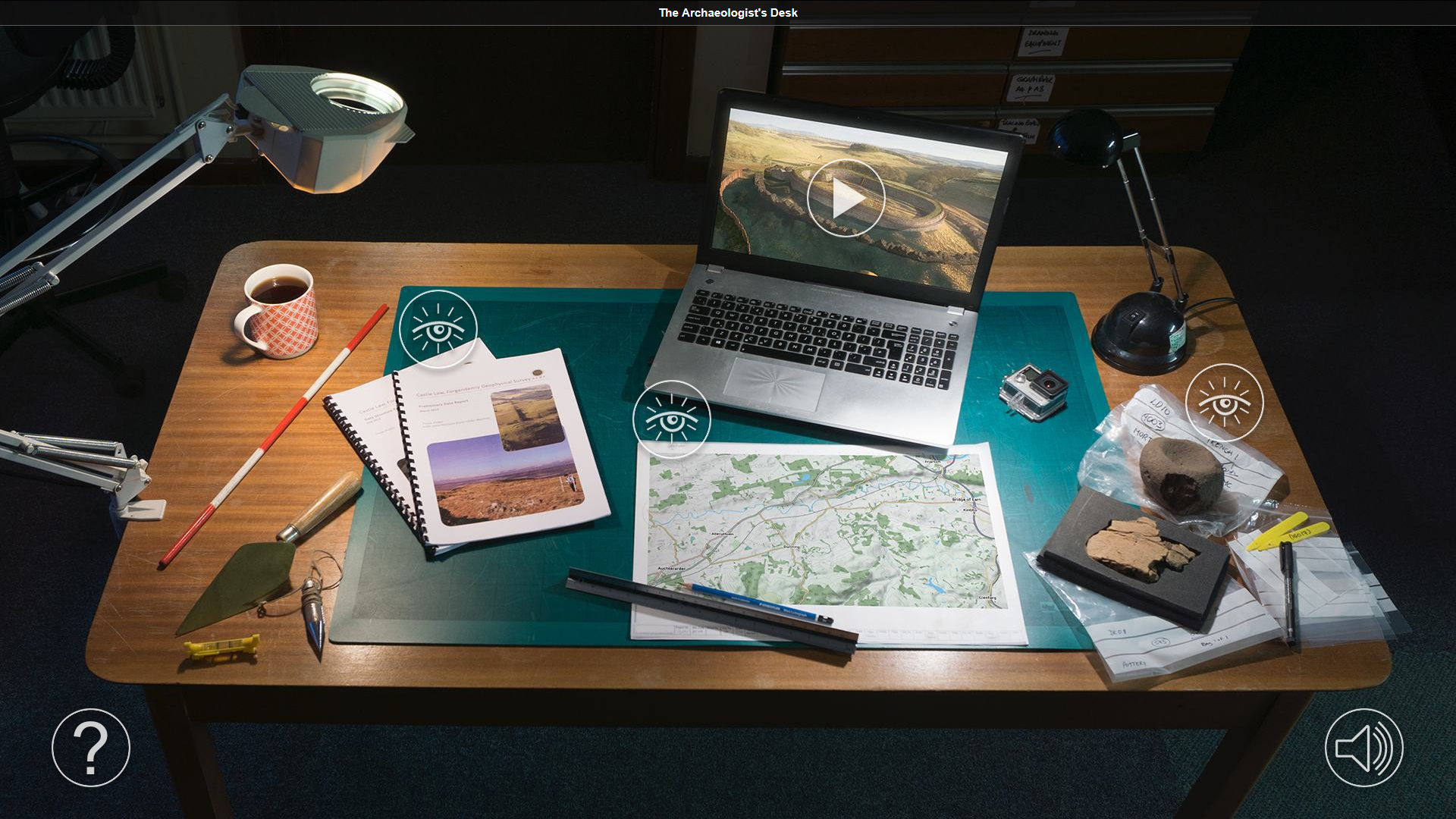Designing an Interactive Archaeological Resource: SERF Hillforts
 Access the SERF Hillforts digital interactive resource by clicking here
Access the SERF Hillforts digital interactive resource by clicking here
Since 2007 archaeologists from the University of Glasgow have been investigating the rich and diverse archaeology of eastern Strathearn, located in the heart of Scotland. One strand of the Strathearn Environs and Royal Forteviot (SERF) project explored and compared ten hillforts within this landscape.
The results of this long-term research will be published in a series of academic papers and a monograph, but the director of the SERF hillforts project, Dr Tessa Poller also wanted to bring the findings to a wider audience in an innovative and engaging way. Working in collaboration with talented professionals Dr Alice Watterson, Kieran Baxter, John Anderson and Kieran Duncan of the 3DVisLab, University of Dundee a web app was developed. The goal was to explore ways to present a practical approach to current issues of representation and audience engagement within archaeology through the development of an interactive online platform which explores the ways archaeologists craft their interpretive narratives on site. The resulting resource showcases different ways to engage with a selection of our archaeological discoveries and the interpretations we have made from the SERF hillforts project.
Archaeological visualisation, or the act of picturing the past in the present, is a complex area of research which exists at the convergence of evidence, interpretation, scientific data collection and artfully crafted storytelling. It is a process which at its core relies on a personal engagement between practitioner, practice and the archaeological record. Traditional modes of representation ask for visuals which embody a somewhat conclusive and didactic voice. How then might we use visualisation to better reflect the fluidity of the interpretive process and engage audiences more meaningfully with the ways in which the excavated evidence challenges archaeologists?
This digital resource strives to explore creative methodologies and outputs which more accurately reflect the multi-layered, multi-vocal and ambiguous processes involved in archaeological interpretation. The interface demonstrates the possibilities for bringing together a range of visual digital media (photogrammetry, aerial photography, HES survey data, 3D reconstruction, film-making) to open up the processes behind the excavation and interpretation to a general audience and act as a dynamic archive now that the excavations have concluded.
Fieldwork and developments of this interactive resource was kindly grant supported by Historic Environment Scotland.
To launch the web app follow the link: http://www.seriousanimation.com/hillforts/

